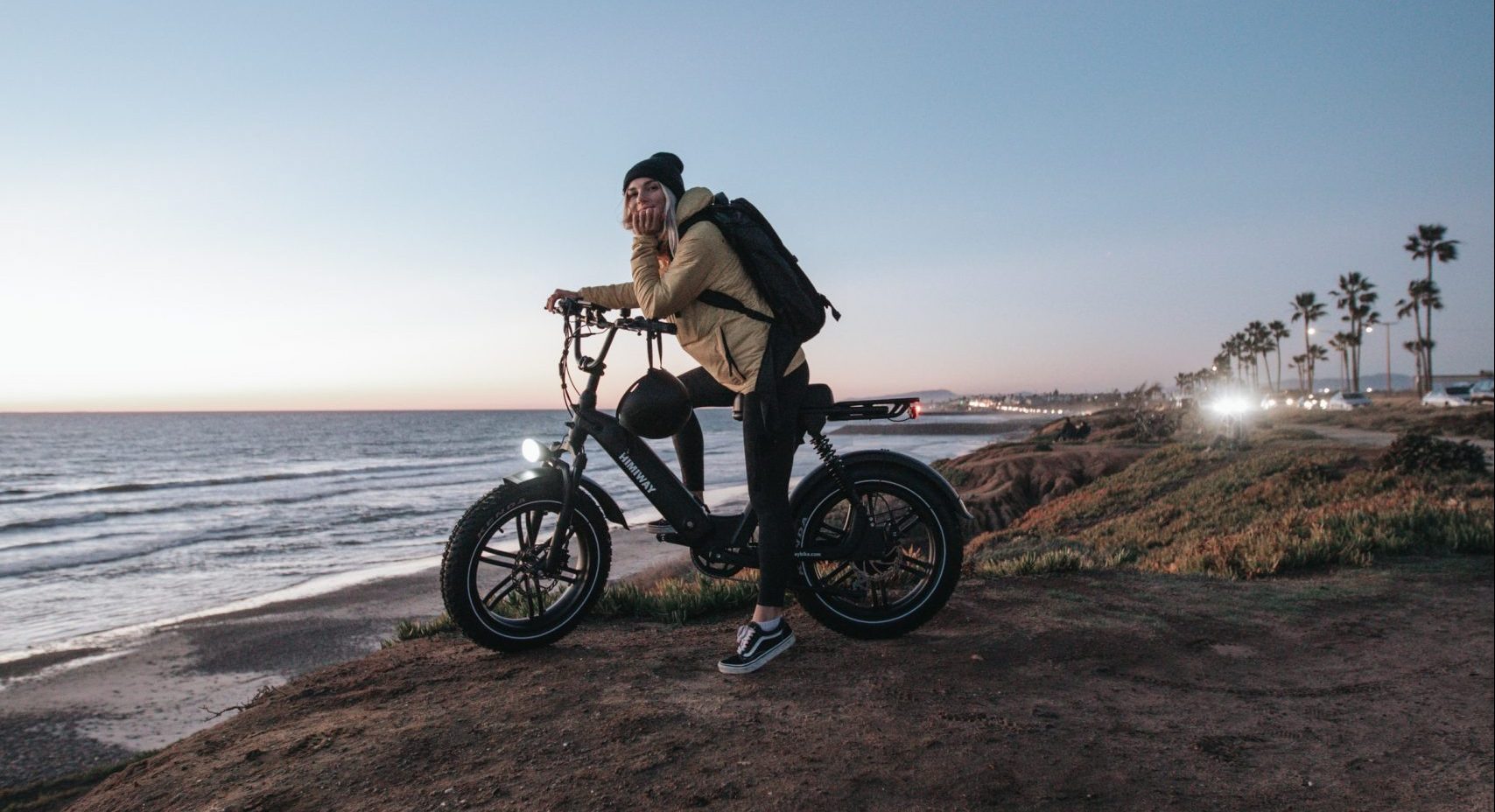If you live near coastal trails or sandy shores, you may be tempted to take your mountain bike onto the beach for adventures. Riding on sand introduces unique control challenges and risks for bikes not designed for those conditions. So is it wise to mix beaches and mountain biking? This guide covers everything to consider first.
Evaluating Mountain Bike Suitability
Standard mountain bikes work great on dirt, rocks, roots, and dedicated trails. But the soft, shifting nature of sand can limit traction and stability compared to firmer terrain. Before hitting the beach, determine if your mountain bike can handle it.
Many modern mountain bikes utilize wider tires and geometries optimized for stability now. Plus sized 27.5+ and 29×2.4-3.0” tubeless tires provide extra float and traction to plow through sand effectively. Short chainstays and slack head angles also enhance a bike’s stability at slower speeds.
Downhill and long travel enduro bikes may prove too heavy and cumbersome in deep sand however. Plus their suspension can bottom out easily, blowing through travel. Lighter cross country and mid-travel trail bikes around 30 pounds offer better acceleration and angles for balancing on beaches.
If unsure, start with shorter rides in firmer or wet packed sand above the tide line first. This provides a steadier surface to grow accustomed to beach riding. Just don’t expect normal responsiveness and braking capabilities when moving to looser conditions.
Watching the Tides
Before riding on beaches, study the tidal charts so you don’t get caught out with rising ocean water. Incoming tides gradually diminish open sand space to ride safely. And swells can wash debris and hazards onto the exposed beach as well.
Plan rides accordingly so you have sufficient time and space to cycle before waters encroach. Turn around well before the tide changes directions to prevent getting trapped against cliffs or jetties. Setting alarms helps ensure you exit safely too.
Be very wary riding near tide pools and drifting surf as well. Rogue waves can swamp lower beach areas rapidly and pull bikes out to sea. So remain hyper aware of conditions to avoid disasters. Ride beaches at low to mid tide for maximum margin of error.
Soft Sand Challenges
Pedaling through loose beaches sand requires vastly more energy output than solid dirt trail surfaces. You sink in constantly, which dissipates momentum and forces you to power through the slog. This leads to quick overheating and fatigue if unprepared.
Also realize loose sand impacts braking effectiveness significantly. Standard rim brakes lack much braking traction to slow momentum on downhills. Disc options help, but still extend stopping distances, so brake earlier and lighter than normal.
Steep sandy descents can be treacherous due to the loose surface. Front wheels dig in easily, causing washouts unless you remain centered over the bike. Likewise, climbing sandy hills taxes your stamina as wheels spin out instead of driving upward efficiently.
Protecting Your Drivetrain
Sand wreaks havoc on mountain bike components from grinding grit, even with robust seals. You’ll experience faster chain and cassette wear along with fouled cables and housing from beach grime exposure. So safeguard your drivetrain to prevent damage.
Apply wet chain lubes before/after rides plus frequent cleaning to resist corrosion and metal wearing from sand infiltrating. Spot clean and lube pivot points, derailleurs, cable housing, etc to keep things operating smoothly as well despite gritty conditions.
DIY frame protection via old tubes, downtube guards, and removable chainstay wraps prevents sand scouring through paint into vulnerable frame and pivot areas over time. Shielding key points retains long term bike integrity and functioning through beach adventures.
Benefits of Fatter Tires
While narrow XC tires can plow through very wet sand temporarily, they quickly dig down to compromise traction and floatation as things dry out. This makes accelerating and balancing extremely challenging.
Plus sized tires measuring 2.4-3.0” greatly improve performance and control in soft sand settings. Their huge air volume allows them to better “float” on top instead of digging deeply. And the added width distributes bike and rider weight over a larger contact patch for enhanced drive and braking grip.
Just take care with low tire pressures on beaches. Too little air lets tires deform around obstacles, increasing puncture likelihood. But excess inflation causes tires to bounce and break free of the sand’s surface, also limiting control. Experiment to find your perfect beach PSI.
Handling Hazards
Rocks, driftwood, broken shells, and other debris get churned up by ocean waves onto the exposed tidal zone. These hazards camouflage themselves as clumps of seaweed or wet sand patches. Smacking into debris at speed can buck you off the bike or slash tires instantly.
Scan ahead constantly for hazards to pick optimal lines. Reset your route around dangers frequently. Sharp shells lying in wait present lots of puncture risks as well if you ride over them, so stay alert.
Consider bringing a frame pump and plugs/patches to address flats since you’ll be far from resources. Know your terrain and abilities to handle issues that beach riding introduces over trails.
Alternative Beach Bike Options
If mountain biking proves overly challenging in deep sand, consider alternative rides instead. Many coastal communities offer beach cruiser rentals built for casual riding on firmer wet sand. Their fat balloon tires, comfy saddles, and relaxed geometry help navigate beaches more easily.
You can also invest in specialty fat bikes explicitly made for extreme conditions like sand and snow. Their ultra wide 3.8-5.0” tires run at low PSI for amazing float and control on otherwise unridable terrain. Custom gearing provides optimal pedaling efficiency through the resistance too.
Just know that fat bikes feel sluggish and awkward on paved roads between beach sections. So get to know their unique handling before committing to owning one. Test ride rentals if possible first.
Finding Appropriate Beaches for Riding
Not all beaches provide equal opportunities for safe mountain biking. Small tidal zones squeezed against jetties lack room to avoid tides or dodge hazards. Beaches lined with large rocks and boulder piles also prevent easy riding and puncture tires frequently.
Look for wide open sandy beaches with relatively tidy surfaces for best cycling enjoyment. Well sorted sand types like volcanic basalt provide firm purchase too. And routes giving access to beaches without needing to ride high speed roads prove safest long term as well.
State parks and ride guides offer insights on suitability and access for hitting certain coastal beaches. Respect all posted regulations and closures to avoid conflicts and environmental damage when riding beaches. Using existing access points minimizes your impact over time too.
Safeguard Your Bike Post Beach
After returning home from sandy beach rides, pay special attention caring for your mountain bike afterwards to prevent premature wear and tear. Rinsing gritty components with water prevents grinding damage from trapped sand and salt buildup corroding parts long term.
Frequent drivetrain cleaning and lubricating retains optimal gear shifting and chain life despite the added exposure. Detail deep clean pivot hardware and frame sections more often as well. Removing sand and drying components completely ensures your bike lasts for years of beach riding excitement!
Final Beach Riding Tips
Coastal beaches promise amazing scenery you just can’t get on inland mountain bike trails. But the dazzling views shouldn’t distract from smart preparation and decision making before cycling onto the sand.
Respect your limits, watch the environmental conditions, gear up appropriately, and safeguard your bike to maximize the beach riding experience safely. Take it slow till you adjust to the unique handling properties only sand introduces. Soon you’ll be carving tracks along the water’s edge!

